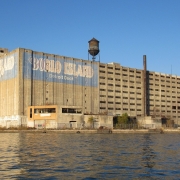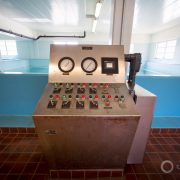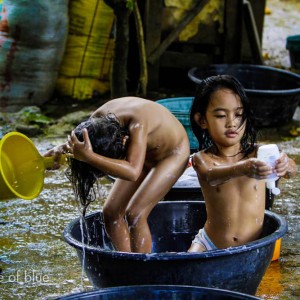The Story of Water, Energy, and Food Lives Here
Keith Schneider reports that the U.S.-China climate agreement is a Circle of Blue high point.
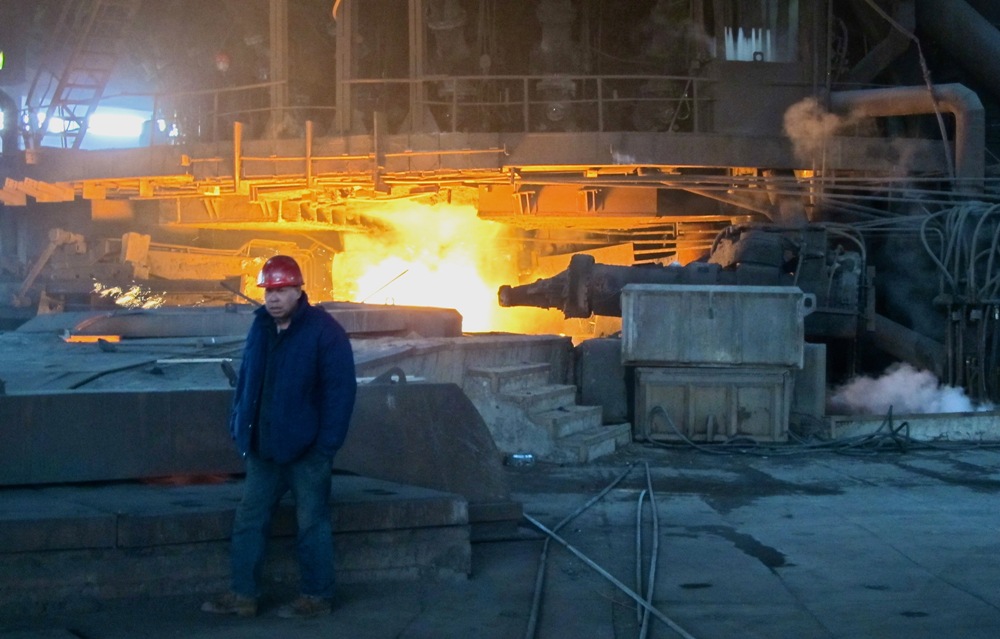
By Keith Schneider
Circle of Blue
There’s no pretending that providing secure stores of fresh water, and producing adequate supplies of energy and food is confounding the nations of Earth. In the era of climate change most of the world’s prominent energy and food producing regions are either getting dryer or more hydrologically unstable.
The consequence is a growing list of global choke points — the economically and ecologically disruptive confrontations over water, energy, and agricultural resources that Circle of Blue and the Wilson Center, our project partner, are describing all over the world.
For five years the two organizations have documented the world’s urgent resource choke points with uncommon depth, skill, and on-the-ground expertise. From Mongolia to China, India to Qatar, Palestine to Peru, and all across the United States and Canada, our Global Choke Point project is helping the world understand the urgency of the contest for water, energy, and food. Just as importantly, our work is identifying opportunities to build international momentum for political and pragmatic solutions.
Never was the influence of our work more apparent than in 2014.
A Climate Breakthrough
In November, the United States and China reached an agreement to reduce emissions of greenhouse gases and take other measures to limit the stresses of industrialization on the planet’s ecosystems. Two of the six major provisions in the pact — one measure to spend $US 50 million to better understand the ties between energy production and water supply, and a second to treat and recycle wastewater from storing carbon in deep geological formations — are the direct result of Choke Point: China, one of our Global Choke Point reports.
This is no small accomplishment. The U.S.-China climate agreement was widely regarded during the U.N. climate summit, held in December in Lima, Peru, as the breakthrough political step that could lead to a binding global climate agreement later this year in Paris.
The U.S.-China climate agreement also is a singular success for a distinctive online communications and policy development model that marries frontline data gathering to international networking and dialogue and is making a proven difference in the world.
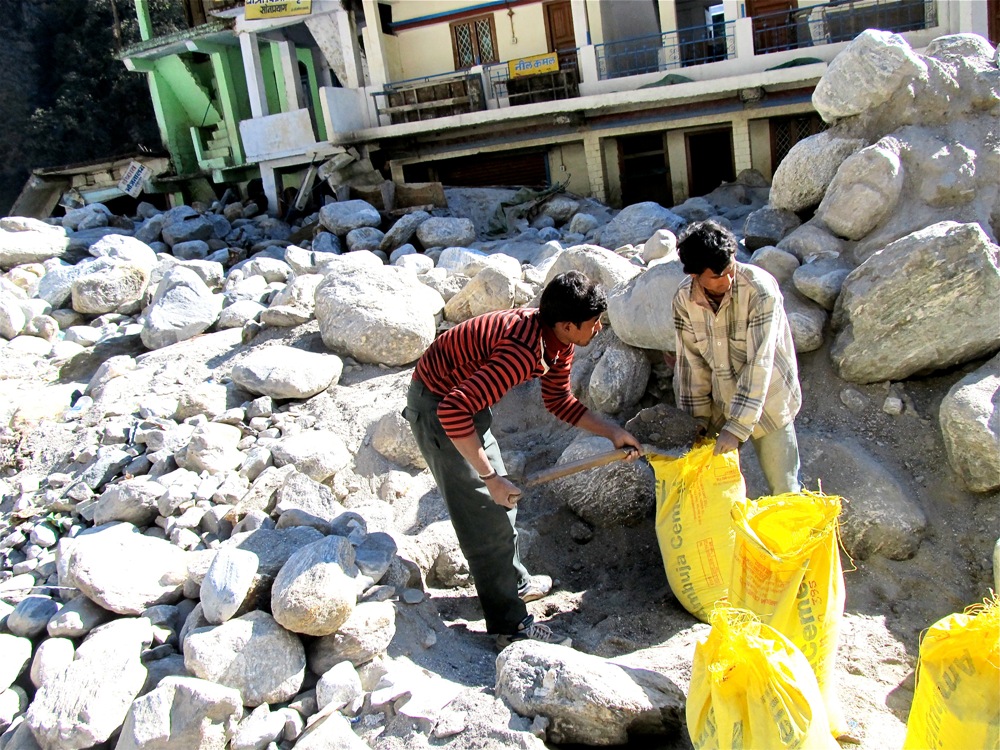
Global Choke Point
That Global Choke Point model was developed by Circle of Blue. Jennifer Turner, director of the China Environment Forum at the Wilson Center, a think tank that fosters international scholarship and dialogue, has been a crucial partner in our China and India projects. Essentially, the two organizations wedded their strengths. Circle of Blue counted on Jennifer and her colleagues to provide context, and Jennifer’s wondrous directory of personal contacts inside and outside China. Jennifer relied on Circle of Blue to dig out the new facts, interview the key players, travel to the resource choke points, and tell a new story of the confrontation between diminishing freshwater supplies and rising demand for energy and food, China’s two biggest water consumers.
Among our big findings in China: Unless energy production and water consumption trends changed quickly in a drying nation, China would run out of water to meet its energy demands by the end of this decade.
Jennifer invited Circle of Blue to describe the details in several public forums in Washington at the Wilson Center in 2011 and 2013. She and Circle of Blue organized three speaking tours in China to meet with and inform Chinese science agencies, brief the U.S. Embassy, and engage important energy and water ministries, provincial officials, university scholars, business executives, students, and ex-pat groups.
Jennifer even convinced water and energy scientists from the U.S. Department of Energy to join us on one of the tours, which featured high-level convenings with Chinese government policy and energy think tanks, as well as business and NGO audiences.
Clearly, audiences in Washington and Beijing listened. The energy and water provisions of the U.S.-China climate agreement are high points for the Global Choke Point project, a satisfying measure of its intelligence and influence.
Yet what truly distinguishes the Global Choke Point project, what has generated an elite and growing global audience, is the urgent story the project is telling online and in person about the choices nations are making to supply water, energy, and food, and the impediments leaders face from a truculent planet.
The project’s findings are changing how global businesses, governments, institutions, and non-profit organizations think about and react to the contest for resources. Our facts and our staffers are regularly cited in elite print, broadcast, and online media in and outside the United States. Informed by our work, the World Bank, the United Nations, the World Economic Forum, the Union of Concerned Scientists, the Natural Resources Defense Council, Greenpeace, and other significant international institutions have started energy-water-food research and development programs. Notably some top U.S. and European foundations that support energy projects in China have integrated water into their energy grant making.
Water-energy-food conferences are held in world capitals from Singapore to New York, San Francisco to Abu Dhabi, Moscow to London to Stockholm to Washington. Our staff members are piling up frequent flyer miles, and meeting global experts and policy makers, because we are routinely invited to make presentations at these conferences.
We do what great story telling has always done. We make the complex much simpler to understand. We teach our media colleagues and citizens how to interpret and react to the swift ecological and economic transition unfolding on every continent.
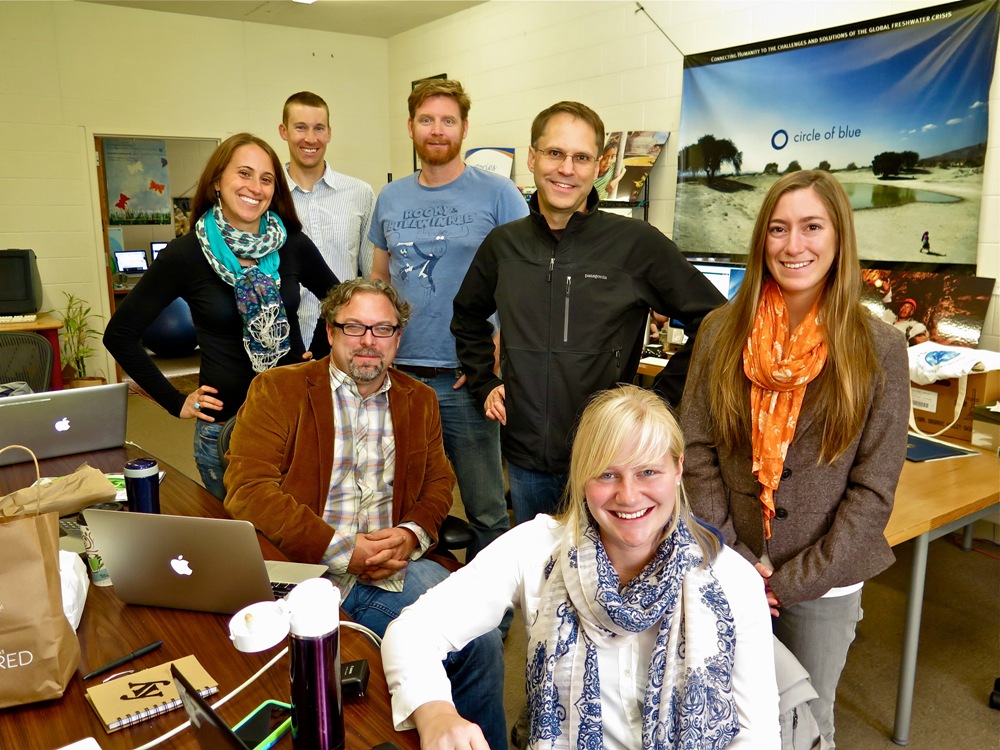
More so than in any previous year we saw Circle of Blue’s influence in how people responded to our narratives. In January 2014, Circle of Blue ranked #1 in the “content excellence” category on the list of Top 50 Water Websites. Last spring, we attracted 500 participants to two interactive calls to update reporters and officials on the details and consequences of the deepening California drought.
In March, our trendsetting online California drought dashboard, providing real time data on water supplies in 45 California reservoirs, was featured by the Obama administration as part of the White House Climate Data Initiative. In August, we were the only news organization to win awards from the Society of Environmental Journalists in two categories. In October, we topped the Guardian newspaper’s list of top water tweeters.
For an international policy and dialogue organization like the Wilson Center, and for a group of multimedia journalists and data designers like Circle of Blue, there is no keener reward than to know your work matters.
Onward to even more significant achievement in 2015.
Circle of Blue’s senior editor and chief correspondent based in Traverse City, Michigan. He has reported on the contest for energy, food, and water in the era of climate change from six continents. Contact
Keith Schneider


